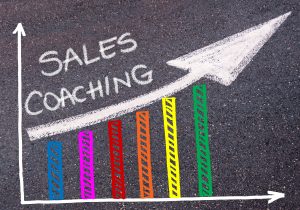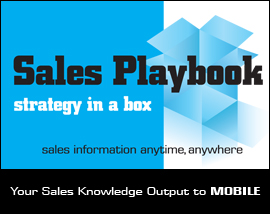When It’s Time To Quit…

There’s a reason not a lot of people talk about quitting, and the reason is because quitting feels wrong. Our whole lives we’re told by everyone from our parents to our coaches that “winners never quit and quitters never win.” Well, we’re here to tell you to forget all of that because, if done right, quitting can be an excellent strategy.
In almost every endeavour only a tiny percentage of people can “win.” When you first set out to do something there is always a sense of excitement, enthusiasm, energy… Then the “dip” hits. The “dip” is the screen, the filter that separates the triers from the winners. For example, when attempting to get accepted into medical school the #1 course that keeps people from succeeding in doing so is Organic Chemistry; Organic Chemistry is the “dip.” However, this is actually a good thing! If it weren’t for the “dip,” then everyone would be everything… There would be no importance put on individuals or companies. There would be no “best.”
Getting passed the dip takes a strong mind set as well as a strong skill set. You have a limited amount of resources (i.e. money, time) during any given situation. If you try to do everything, you’re going to be very busy, but what you’re also doing is dissipating your energy across a range of things. This dissipation means that those individuals who decide to focus on one singular thing will always beat you. The reason people get to where they are in specific ventures is because they quit all their other ventures. The individuals who are expert at X are the ones who aren’t putting focus on all the other Y’s (i.e. hobbies, family time etc.).
You can get through any dip if it’s the right size and if you have the right mind/skill set. But always remember that every dip has a cost, so ask yourself before you start: is it worth it? Are you willing to pay the price it takes to focus enough to move past the dip to the other (profit) side? If not, you shouldn’t even bother starting. Smart quitters either quit at the beginning or the end, never during the dip; because if you quit in the dip, half way through organic chemistry, then you’ve wasted all that time it took you to get this far without garnering any of the benefits on the other end.
read moreProtect Your Castle Rule: Creating Mental Toughness

“No one can enter your castle without your permission.”
It’s hard being a manager, you have to hire, fire, have difficult conversations and deal with backlash of making the tough decisions. In the world of selling you can’t control what the prospect is going to say, and that combated with an average day filled with rejection & stresses can make for very mentally draining situations. So, use “your castle” as your safe spot and your identity. No matter what happens in the outside world, no one can effect your self esteem or your self concept without your permission.
Success in this lies between your ears: you can talk yourself in/out of anything. There are three main concepts regarding this:
- We have to control how the outside world affects us (you have control over this)
- While you’re out there, wear a spacesuit (if stuff does happen, let it bounce off you!)
- No after-burn or reach-back. Meaning, once you’re in the castle and you review all the things that happened to you, don’t live in the past & dwell. Look forward, not back – that’s where you need to shift your focus to!
But what if some of that negative self-talk makes its way into the castle? You have to first acknowledge that it’s happening & that it can’t control you. You must then acknowledge and remain aware that behaviour controls attitude – once you start behaving differently, your mind will catch up with you. You just need to tell yourself “I can control this. This is in my sphere of influence, and I’m not going to let anyone else control what I’m doing.” Once you take accountability and are responsible for it, all the ripples disappear. It’s not necessarily about staying positive, but rather realistic, there is a lot of adversity out there & you are going to fail – it’s about how you deal with those failures that counts.
read moreTips For Selling Tech To B2B Decision Makers

One of the #1 problems facing technology companies in the B2B sector today is how to sell technology to the financial & business decision makers of the organization. Typically, tech vendors are very good at selling their products to people who speak the “IT language,” but things get more difficult when they have to sell to people who do not – those who run the lines of business, marketing, VP of finance, CFO etc. They key is taking the technology and putting it into terms that resonate with the financial and business influencers & decision makers; you have to make it appealing to them, play on the things that are important to their area of the business.
As time passes, the need for financial sales execution is going much broader & more deep, and the complexities in the sales models (pricing, licensing, delivering) are becoming more difficult. When you’re going to sell to a financial decision-maker you have to be able to talk to them in a way that they understand, you have to work towards customer experience improvements, sales efficiency improvements, and you have to improve the economics of the underlying transaction – you have to be able to please the customer & the vendors. Though overwhelming at times, these complexities in the market allows us to incrementally add value.
As a salesperson, you have to understand the business to which you are selling to and express what the technology delivers & what the solution brings to the table. You have to turn this info into metrics, languages & content that a financial decision maker can look at & feel confident about – making it more likely that they buy.
read moreHow To Fix Sales Performance Problems

The first step is to identify the sales performance problems and then look at those in a holistic way. Sometimes organizations and sales execs get so caught up in the day-to-day operations that they overly focus on one area or another and don’t take a step back to get a sense of what is happening within the sales organization; meaning they never get to the root cause of the problems.
When we look to identify the root cause we try to keep it focused in three areas: strategy, process & people. These are the three areas that need to be assessed in order to get a sense of what is going on & what needs to be fixed.
It’s important to keep strategy very simple. Focus on a few core things such as the value proposition (Is it clearly defined? Can it be articulated by the sales team to the clients?). Once it is defined, you can then figure out which customer you want to be working towards – who do you want to go after and is the customer going to value your value proposition? You need to keep things targeted on those who are likely to buy; the shotgun approach no longer works.
Process & people are the more challenging areas. Process comes down to execution – how will you reach the customers you want to reach? The first step is to look at the sales structure and the end-to-end sales process, as a lot of organizations overlook alleging this process with the customer’s buying journey. Also important is to align the sales process with marketing process – which leads are you generating & how are you selling to them?
When looking at people there are typically two prominent issues: skill deficiency & motivation caps. Once you have your sales processes defined and you know how you’re going to market, you have to be sure that you have the right talent in the right places. You have to determine which reps have the skills necessary to execute your strategy and base their role on that. Another issue with people is management. Is your management team driving performance and motivating employees? Are compensations aligned with desired behaviours? All of these also drive performance.
read moreWhen To Use Sales Coaching

It is first important to understand that every sales rep needs their own coaching plan. Unlike general management, coaching is not a one-size fits all deal; each sales rep has different skills and different things they need to improve on. For example, one sales rep might need help identifying priorities whereas another might need help in negotiation & closing. It is these differences that make it important to have tailored/individual sales plans.
Sales managers should be looking at the gaps within their sales team, and then think about which coaching actions are the most appropriate to improve skill sets among the reps. This first step of identifying skill gaps will set the tone for the rest of the planning. Sales managers looking at the individual reps should be paying attention to motivations (are they motivated to perform a specific skill) and proficiency (how well they perform a specific skill), with this information managers can then decide which management action may be appropriate (not always coaching). For example, let’s say you have a veteran sales rep who is very proficient at prospecting but does not want to prospect; we call this attitude deficiency rather than skills deficiency. In this case, low motivation should be combated with counselling rather than coaching, as coaching will not be successful if the desire to be coached isn’t there.
The best case scenario as a sales manager is to have coaching lead to empowerment, with traditional coaching being moved away from over time. Empowerment is when your rep has great motivation as well as skill, meaning you have to shadow them less & can focus on those who need the training more.
read more

